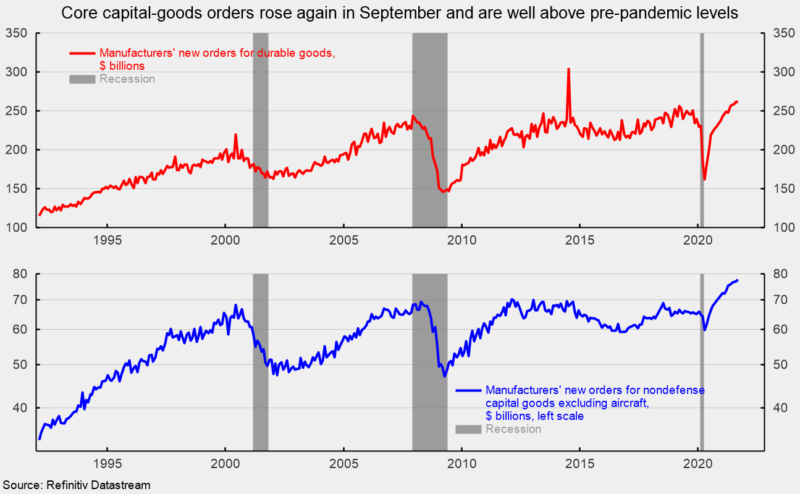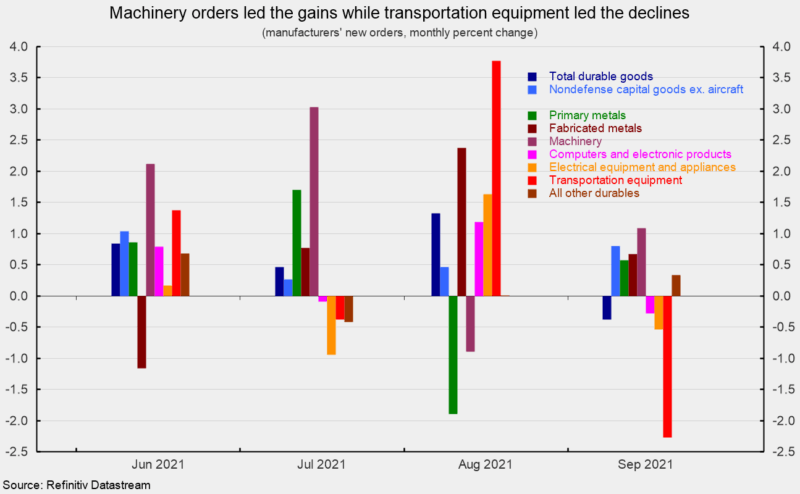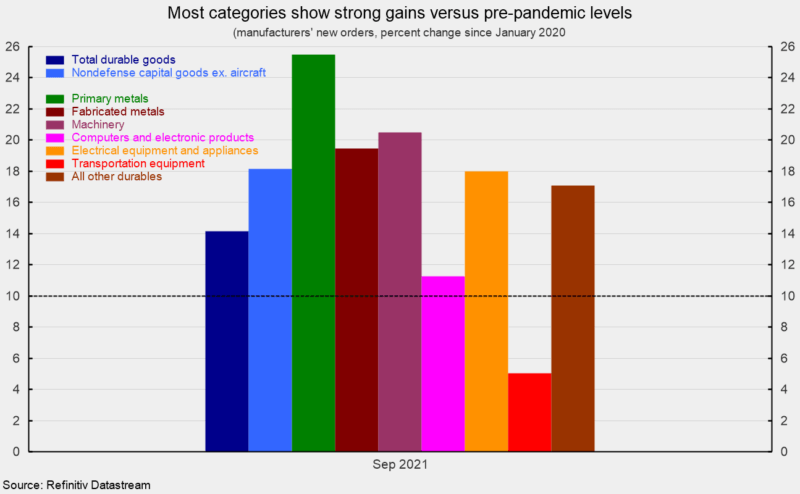Core Capital-Goods Orders Suggest Business Investment Remains Robust
New orders for durable goods fell in September, falling 0.4 percent, just the second decline in the last 17 months. Total durable-goods orders are up 20.7 percent from a year ago and 14.0 percent from January 2020. The September gain puts the level of total durable-goods orders at $261.3 billion, the third-highest level on record (see top of first chart).
New orders for nondefense capital goods excluding aircraft or core capital goods, a proxy for business equipment investment, rose 0.8 percent in September after gaining 0.5 percent in August, 0.3 percent in July, and 1.0 percent in June, putting the level at $77.7 billion, another record high and the tenth new high in the last eleven months. Core capital-goods orders had broken the $70 billion mark only once before, in February 2012, but have been above $70 billion for 11 consecutive months (see bottom of first chart).
Among the categories in the report, gainers outnumbered decliners four to three. Among the individual categories, primary metals rose 0.6 percent, fabricated metal products gained 0.7 percent, machinery orders increased by 1.1 percent, and the catch-all “other durables” category added 0.3 percent while computers and electronic products fell 0.3 percent, electrical equipment and appliances were off 0.5 percent, and transportation equipment sank 2.3 percent (see second chart). Within the transportation equipment category, motor vehicles and parts dropped 2.9 percent as auto manufacturers grappled with ongoing chip shortages, nondefense aircraft lost 27.9 percent, but defense aircraft surged 104.3 percent. From a year ago, every category shows a gain. Likewise, comparing the latest results to pre-pandemic levels, every category shows a gain with all but one posting double-digit growth (see third chart).
Durable-goods orders continue to be strong, particularly the core-capital goods components. Demand remains strong for the manufacturing sector, and the tight labor market creates incentives to substitute capital for labor. The pandemic may be accelerating structural changes to the economy, affecting labor, housing, manufacturing, and services. With the decline of the recent resurgence of new Covid, the outlook for growth is once again strengthening. However, upward pressure on prices continues as demand outpaces supply. As labor, materials, and logistical issues are alleviated, price pressures are likely to ease, but the process may take a significant period of time.








